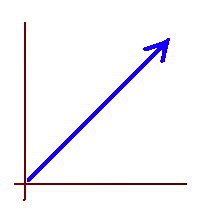Confusion type: unexpected answer
When the answer to a problem shows up in an unexpected or unfamiliar format, the student very well may fail to realize that result is the answer to the problem.
Confusion:
Are we there yet?
Where is the answer?
This cannot possibly be the answer, can it?
This type of confusion can occur at any level.
It most commonly shows up in Algebra, the first time students are asked to find equations of lines, circles and so on. Before that point, chances are they had only been asked to find numerical solutions to equations, or systems of equations, or to simplify algebraic expressions.
So, up to that point, for them an equation is understood as the problem, while the answer needs to be a number, or a simplified expression. Therefore, in their minds, an equation cannot be the answer to any problem.
This can happen again and again, in many forms, even in Differential Equation courses. For example, when the answer to some problem takes the form F(x, y) = c, meaning the variable ‘y’ is interpreted to be an implicitly defined function of ‘x.’ The same kind of confusion as mentioned above can take place if the student is strongly expecting the answer to be an explicitly defined function, in the traditional form y = f(x). At that point the solution given by the equation F(x, y) = c may seem like nothing, like no answer at all, just one more step in the process of finding the “real” answer. However, this impression is of course mistaken because in those particular cases F(x, y) = c is the real answer, since an explicit definition of the form y = f(x) for ‘y’ is nowhere to be found.
Solving spherical triangles
-
This post is a side quest in the series on navigating by the stars. It
expands on a footnote in the previous post. There are six pieces of
information as...
18 hours ago





No comments:
Post a Comment